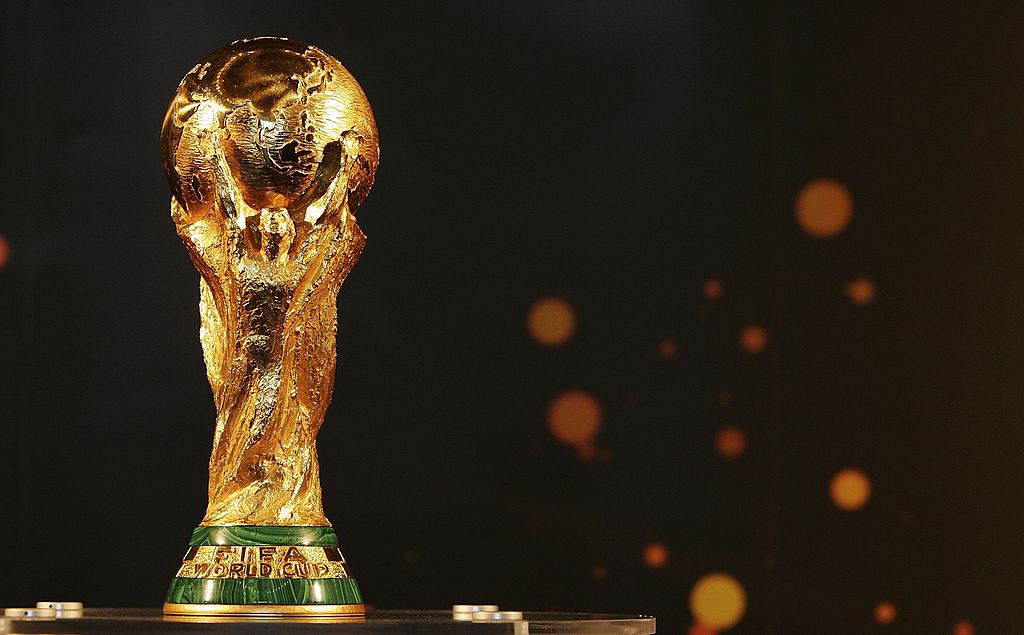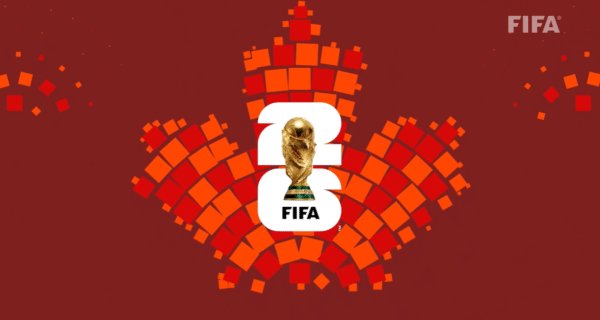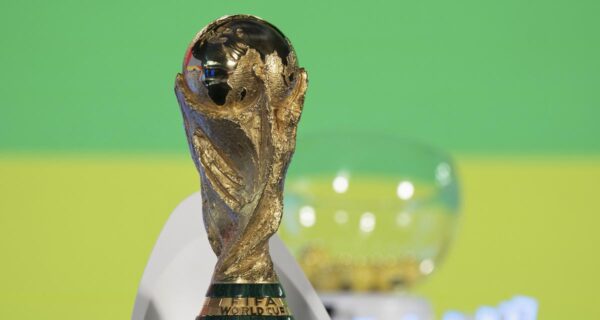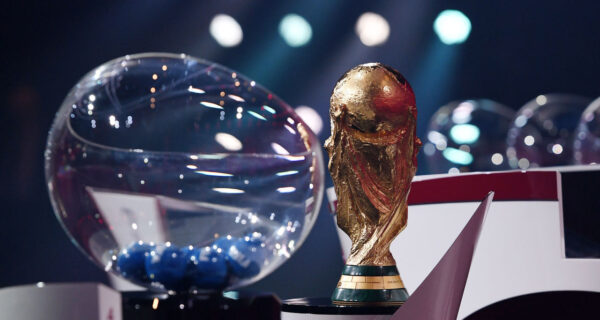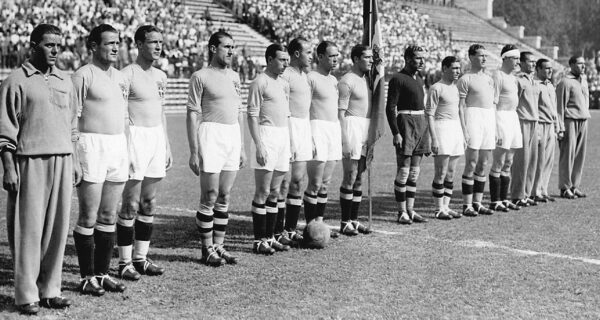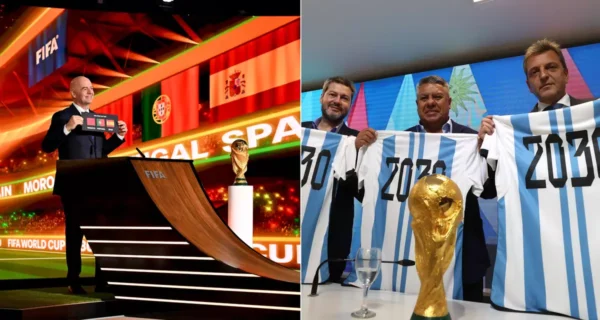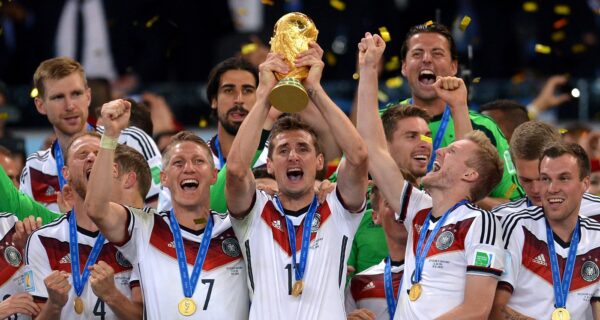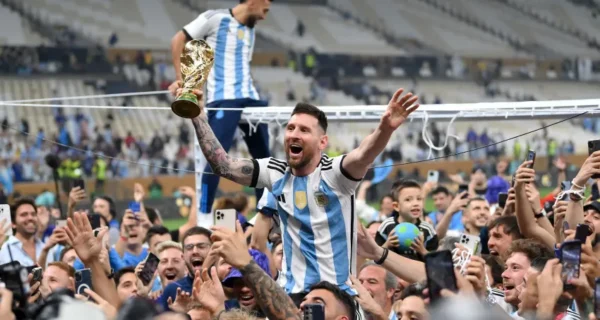The FIFA World Cup stands as the most prestigious soccer tournament on the planet. Every four years, nations battle for glory on the field, but many fans don’t realize there’s another significant reward at stake – money. FIFA rewards teams handsomely for their performance, with prize amounts growing dramatically over the decades.
Today we’ll explore exactly how much cash World Cup champions take home and how these financial rewards have evolved since the tournament’s early days.
FIFA World Cup 2022 Prize Money
The 2022 FIFA World Cup in Qatar featured the largest prize pool in tournament history. FIFA allocated a massive $440 million in total prize money, representing a significant increase from previous editions. This financial commitment demonstrates the tournament’s growing commercial success and global popularity.
Argentina, the 2022 World Cup champions, received an unprecedented $42 million for their victory. This amount marked a $4 million increase from what France earned as 2018 champions. The runners-up, France, didn’t go home empty-handed either, collecting a substantial $30 million prize.
Prize Money Breakdown
FIFA distributed the $440 million prize pool across all 32 participating teams based on their tournament performance. Even teams eliminated in the group stage earned significant compensation. This structure ensures every qualifying nation benefits financially from the World Cup.
The prize money breakdown for Qatar 2022:
- Winner (Argentina): $42 million
- Runner-up (France): $30 million
- Third Place (Croatia): $27 million
- Fourth Place (Morocco): $25 million
- Quarter-Finals (Brazil, Netherlands, Portugal, England): $17 million each
- Round of 16 (USA, Senegal, Australia, Poland, Spain, Japan, Switzerland, South Korea): $13 million each
- Group Stage (16 teams including Qatar, Germany, Belgium): $9 million each
Every participating team also received $1.5 million before the tournament began to cover preparation costs. This additional payment helps nations manage expenses related to training camps and friendly matches prior to the main event.
FIFA World Cup 2018 Prize Money
The 2018 FIFA World Cup in Russia featured a total prize money pool of $400 million. This represented a major increase from the $358 million allocated for the 2014 tournament in Brazil. FIFA’s financial commitment continues to grow with each World Cup cycle.
France, as the 2018 champions, received $38 million for their triumph. The runners-up Croatia took home $28 million, showing how FIFA rewards teams for advancing through the tournament stages.
2018 World Cup Prize Money Distribution
The complete breakdown of the 2018 prize money shows how FIFA rewarded teams at each stage:
- Winner (France): $38 million
- Runner-up (Croatia): $28 million
- Third Place (Belgium): $24 million
- Fourth Place (England): $22 million
- Quarter-Finals (Russia, Brazil, Uruguay, Sweden): $16 million each
- Round of 16 (Spain, Denmark, Argentina, Portugal, Mexico, Japan, Switzerland, Colombia): $12 million each
- Group Stage (16 teams): $8 million each
These amounts reflected FIFA’s commitment to sharing tournament revenues with participating nations. The organization recognizes that national federations invest significantly in qualifying and preparing for the World Cup.
Historical Evolution of World Cup Prize Money
The financial rewards for World Cup success have skyrocketed since the early editions of the tournament. In 1982, when Italy won the World Cup in Spain, the champions received just $2.2 million. Compare that to Argentina’s $42 million in 2022!
This dramatic increase reflects the World Cup’s transformation into a global commercial powerhouse. Television rights, sponsorships, and merchandise have turned the tournament into a multi-billion dollar enterprise.
Let’s trace the remarkable growth in winner’s prize money across World Cup history:
- 1982 Spain: Winner (Italy) – $2.2 million
- 1986 Mexico: Winner (Argentina) – $2.8 million
- 1990 Italy: Winner (Germany) – $3.5 million
- 1994 USA: Winner (Brazil) – $4 million
- 1998 France: Winner (France) – $6 million
- 2002 Japan/South Korea: Winner (Brazil) – $8 million
- 2006 Germany: Winner (Italy) – $20 million
- 2010 South Africa: Winner (Spain) – $30 million
- 2014 Brazil: Winner (Germany) – $35 million
- 2018 Russia: Winner (France) – $38 million
- 2022 Qatar: Winner (Argentina) – $42 million
The most dramatic increase came between 2002 and 2006, when the winner’s prize jumped from $8 million to $20 million. This 150% increase marked FIFA’s recognition of the tournament’s growing commercial value in the modern era.
Total Prize Pool Growth
The total prize pool has grown even more impressively:
- 1982: $20 million total
- 1990: $54 million total
- 1998: $103 million total
- 2006: $266 million total
- 2014: $358 million total
- 2018: $400 million total
- 2022: $440 million total
This represents a 2,100% increase in the total prize money pool over 40 years. Few sporting events can match this level of financial growth, highlighting soccer’s expanding global reach and commercial appeal.
How FIFA Distributes World Cup Prize Money
FIFA doesn’t pay prize money directly to players. Instead, the organization transfers funds to each country’s national soccer federation. These governing bodies then decide how to distribute the money among players, coaches, and other staff.
Different federations handle this distribution differently. Some guarantee players a fixed percentage of prize money through agreements negotiated before the tournament. Others maintain more control over how funds get allocated.
Many national teams have bonus structures in place before the World Cup begins. These agreements outline exactly what players will receive for reaching various stages of the tournament, with the biggest bonuses naturally reserved for winning the trophy.
Player Earnings from Prize Money
The actual amount players receive varies enormously depending on their national federation’s policies. For example, after the 2014 World Cup, German players reportedly received around $400,000 each for winning the tournament.
Many federations also use portions of World Cup prize money to fund youth development, infrastructure improvements, and grassroots programs. This approach helps ensure long-term benefits from tournament success.
Team sponsors sometimes add extra incentives for World Cup performance. These commercial bonuses can significantly increase the financial rewards for players beyond the official FIFA prize money distributed through their federations.
Beyond Money: Other Rewards for World Cup Winners
Money isn’t everything for World Cup champions. The prestige of lifting the iconic gold trophy creates career-defining moments for players. However, they don’t get to keep the actual trophy permanently.
The original FIFA World Cup Trophy, made of solid 18-karat gold, remains in FIFA’s possession. Winners receive a gold-plated replica to keep. Since 1974, the names of winning teams have been engraved on the base of the original trophy.
Medals and Recognition
Players and staff members from the top three teams receive medals:
- Gold medals for the winners
- Silver medals for the runners-up
- Bronze medals for the third-place team
Since 2006, World Cup winners also earn the right to wear the special FIFA Champions Badge on their team jerseys. This distinctive gold emblem appears on winners’ uniforms until the next World Cup concludes.
Commercial Opportunities
Success at the World Cup often leads to lucrative commercial opportunities for players. Endorsement deals, appearance fees, and social media partnerships can generate income far exceeding the official prize money.
National heroes from World Cup-winning teams become marketing gold. Companies eagerly sign these players as brand ambassadors, particularly in their home countries where their popularity reaches its peak after tournament success.
FAQs
1. How much will the 2026 World Cup winners receive?
FIFA hasn’t announced the prize money for the 2026 World Cup yet, but based on historical trends, we can expect the winners to receive around $50 million. The total prize pool will likely exceed $500 million as FIFA continues to increase financial rewards.
2. Do players get to keep all the prize money?
No, players don’t directly receive the prize money. FIFA transfers funds to national federations, which then determine how to distribute the money. Players typically receive bonuses based on pre-tournament agreements with their federation.
3. Has the World Cup prize money always been this high?
No, World Cup prize money has grown dramatically. In 1982, winners received just $2.2 million compared to $42 million in 2022. This represents a nineteen-fold increase over 40 years as the tournament’s commercial value has exploded.
4. How does World Cup prize money compare to other sports tournaments?
The FIFA World Cup offers some of the highest team prize money in sports. However, individual competitions like tennis Grand Slams or golf majors may offer higher per-player prizes to their champions than what World Cup players receive after team distribution.
5. Do women’s teams receive the same prize money?
No, the Women’s World Cup historically featured much smaller prize pools. For the 2023 tournament, FIFA allocated $110 million, about a quarter of the men’s 2022 prize money. However, FIFA has committed to equal prize money by 2027.
6. What happens to teams that don’t advance past the group stage?
Teams eliminated in the group stage still receive significant compensation. In 2022, each team that didn’t advance to the knockout rounds earned $9 million from FIFA, plus the $1.5 million preparation money given to all participants.
7. Do host nations get extra prize money?
Host nations don’t receive additional prize money specifically for hosting. They earn the same performance-based rewards as other teams. However, hosts benefit financially from infrastructure investments, tourism revenue, and commercial opportunities.
8. When does FIFA pay the prize money?
FIFA typically transfers prize money to national federations shortly after the tournament concludes. The exact timing varies, but payments usually occur within weeks of the final match, allowing federations to distribute bonuses to players quickly.
9. How much does the FIFA World Cup trophy cost?
The current FIFA World Cup Trophy, introduced in 1974, is made of solid 18-karat gold and valued at approximately $20 million. However, the trophy’s cultural and historical significance makes its true value incalculable.
10. Do teams receive money for qualifying for the World Cup?
Yes, all qualifying teams receive money from FIFA. For the 2022 World Cup, each of the 32 qualifying nations received $1.5 million in preparation costs before the tournament began, in addition to their performance-based prize money.

